Choosing the ideal property management software (PMS) is a significant challenge for any landlord or property manager.
The sheer volume of platforms and seemingly identical feature sets can make the search for the perfect operational solution feel overwhelming. Whether you’re transitioning from manual, outdated systems, or you’re an established firm looking to upgrade a legacy platform, the core dilemma remains: identifying the tool that offers true value and efficiency.
To cut through the complexity, we’ve analyzed and assembled a curated list of the best property management software on the market for 2025.
The Top 10 Software Picks at a Glance
- AppFolio – Ideal for landlords with diverse portfolios, requiring a minimum of 50 units but offering advanced capabilities.
- Buildium – A comprehensive solution for portfolios of all sizes, offering everything from accounting to analytics.
- RentVine – A great alternative for larger portfolios, known for strong customer support and a range of property management tools.
- TurboTenant – Top choice for free rental property management software, especially for landlords with small portfolios.
- Avail – A free software option great for new tenant acquisition, with upgradeable features for a more comprehensive solution.
- Yardi Breeze – Offers basic to advanced solutions for residential portfolios with competitive pricing.
- Stessa – A free web-based service for tracking properties, managing documents, and more, with a premium option for advanced features.
- Landlord Studio – Affordable and competitive, especially for small portfolios, with a free option for up to 3 units.
- SimplifyEm – Best for landlords managing 31-100 units, offering a sliding scale pricing model.
- Innago – A free property management software with a comprehensive set of features for smaller portfolios.
The Industry Leaders in Property Management Software
The following few property management software solutions are some of the best known options in the industry. They are comprehensive, intuitive, and integrated with many of the other tools that you use.
If you want to accelerate growth and have a full box of tools, check these out.
AppFolio

AppFolio is widely recognized as one of the most robust property management platforms on the market. It offers everything from marketing and leasing tools to maintenance management, accounting, and owner and tenant portals—all in a single, cloud-based system.
The platform is built for scalability, making it ideal for landlords and property managers with diverse or expanding portfolios. AppFolio requires a minimum of 50 units to start, and pricing begins at $1.40 per unit per month with a $280 minimum monthly spend on its Core plan.
For those who need more advanced features such as workflow automation, performance insights, and open API access, the Plus plan starts at $3.00 per unit per month with a $900 monthly minimum.
AppFolio’s premium pricing reflects its advanced capabilities and enterprise-level tools, making it best suited for mid to large-sized portfolios rather than small, independent landlords. Lula also integrates with AppFolio through the Stack Marketplace, helping property managers streamline maintenance operations directly within their existing workflows.
Buildium
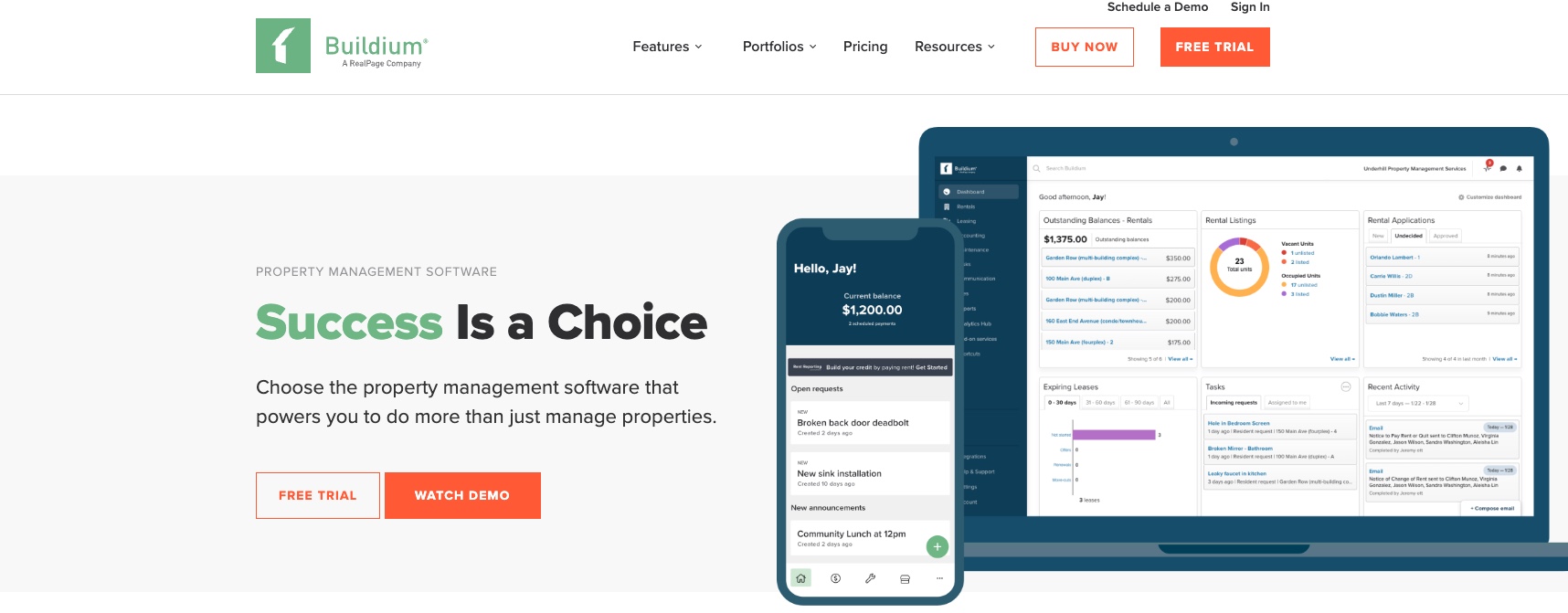
Frequently listed near the top with AppFolio, Buildium’s property management software offers a full suite of tools for landlords and property managers with portfolios large or small. From residential properties and HOAs to affordable housing and student rentals, it covers all the essentials—accounting, online rent collection, maintenance tracking, tenant and owner portals, reporting, and leasing workflows.
Buildium’s pricing starts with the Essential plan around $58 per month, while the Growth and Premium tiers unlock more advanced features like performance analytics, live phone support, and open API access. These higher tiers start in the mid-hundreds per month, making Buildium a scalable option that grows with your portfolio.
It’s a powerful, user-friendly platform built to simplify the daily operations of landlords and property managers alike, offering the depth larger portfolios need, without overwhelming smaller ones.
RentVine
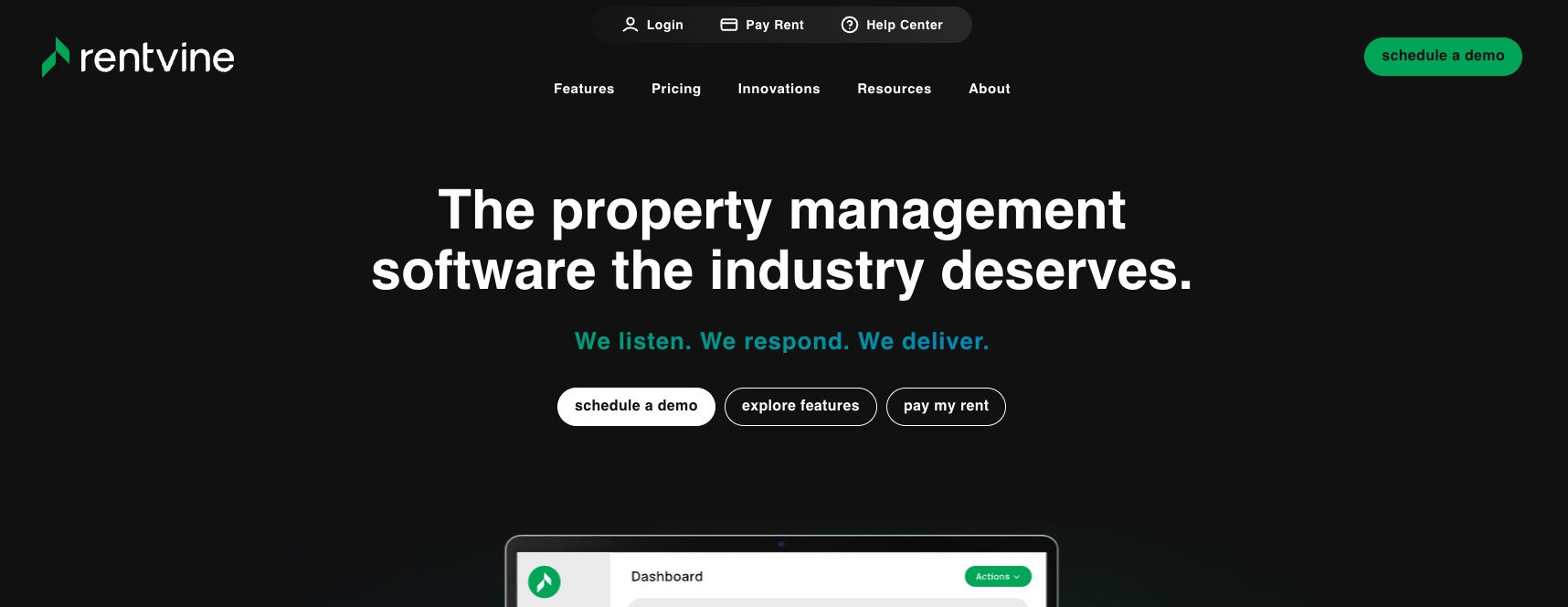
If you’re looking for an alternative to the two big rivals at the top, RentVine is worth checking out, and it’s particularly well-equipped for growing or larger portfolios. It offers the same level of functionality as Buildium and AppFolio, with an emphasis on simplicity, automation, and strong customer support.
Its software includes everything you’d expect from a full-featured property management platform: marketing, tenant screening, lease and document management, maintenance scheduling, vendor payments, reporting, and owner statements. Pricing is transparent, starting around $2.50 per unit per month with a $199 monthly minimum. There’s also a handy cost calculator on their site to help you estimate your total spend based on portfolio size.
In 2025, RentVine introduced a new integration with Lula, allowing property managers to handle maintenance requests directly within the RentVine platform. The partnership adds another layer of efficiency to an already intuitive system, helping users streamline work orders and vendor coordination without switching tools.
The Affordable Property Management Software
We’ve covered a couple of big names, as well as a promising alternative, but each come with a price tag. Some landlords are either trying to cut costs when it comes to software, or they simply don’t need the kind of diverse set of tools that comes with a pricey top contender like Buildium.
Here are four of the best free or low-budget rental property management software solutions.
TurboTenant

TurboTenant continues to rank among the top free property management software options, offering a comprehensive set of tools for landlords with smaller portfolios. Its free plan includes everything you need to manage day-to-day operations—rental listings, online rent collection, tenant screening, maintenance requests, and accounting tools—all from one easy-to-use dashboard.
The platform excels at helping landlords attract and onboard tenants, with strong features for marketing, online rental applications, credit and background checks, and customizable lease agreements. For those who want additional capabilities such as income verification, unlimited e-signatures, or faster payout times, TurboTenant also offers a Premium plan starting at $12.42 per month (billed annually).
For a budget/free software, TurboTenant certainly brings an impressive array of property management solutions to the table. Similar to AppFolio and RentVine, we integrate with TurboTenant! Look into their Maintenance Plus features.
Avail
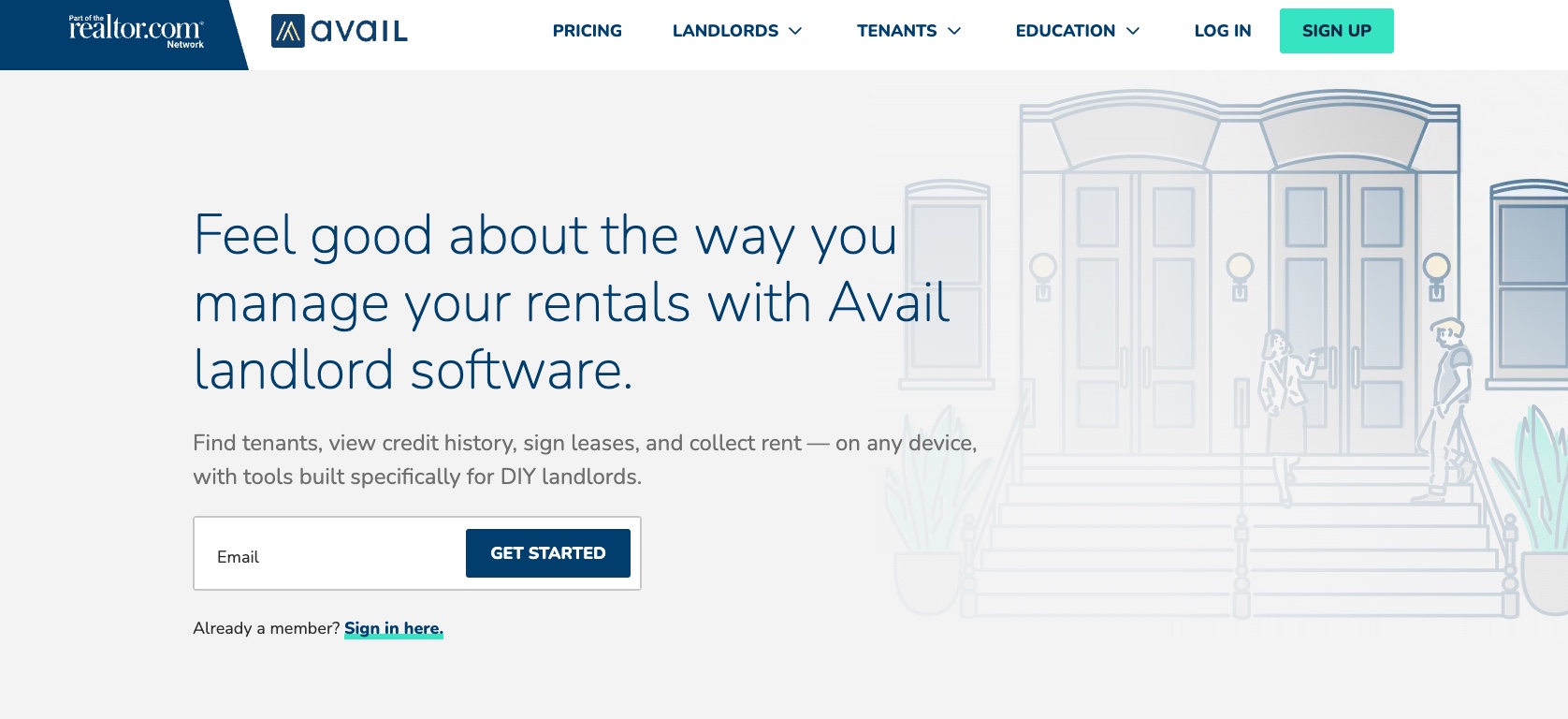
Like TurboTenant, Avail is another free software that has some useful tools for securing new tenants.
With Avail, you can syndicate rental listings on a number of the top rental listing websites, including Apartments.com, Realtor.com, and Redfin. Their free software package includes the standard items (background screening, online rent collection, maintenance tracking, property accounting, a tenant portal, etc.).
If you want more advanced tools, the “Unlimited Plus” plan costs $9 per unit per month and adds features such as next-day rent payouts, waived ACH fees, customizable applications and leases, dedicated property websites, and faster customer support.
This makes Avail especially compelling for smaller portfolios or landlords who want a flexible, cost-effective platform that lets them scale up when needed.
Yardi Breeze
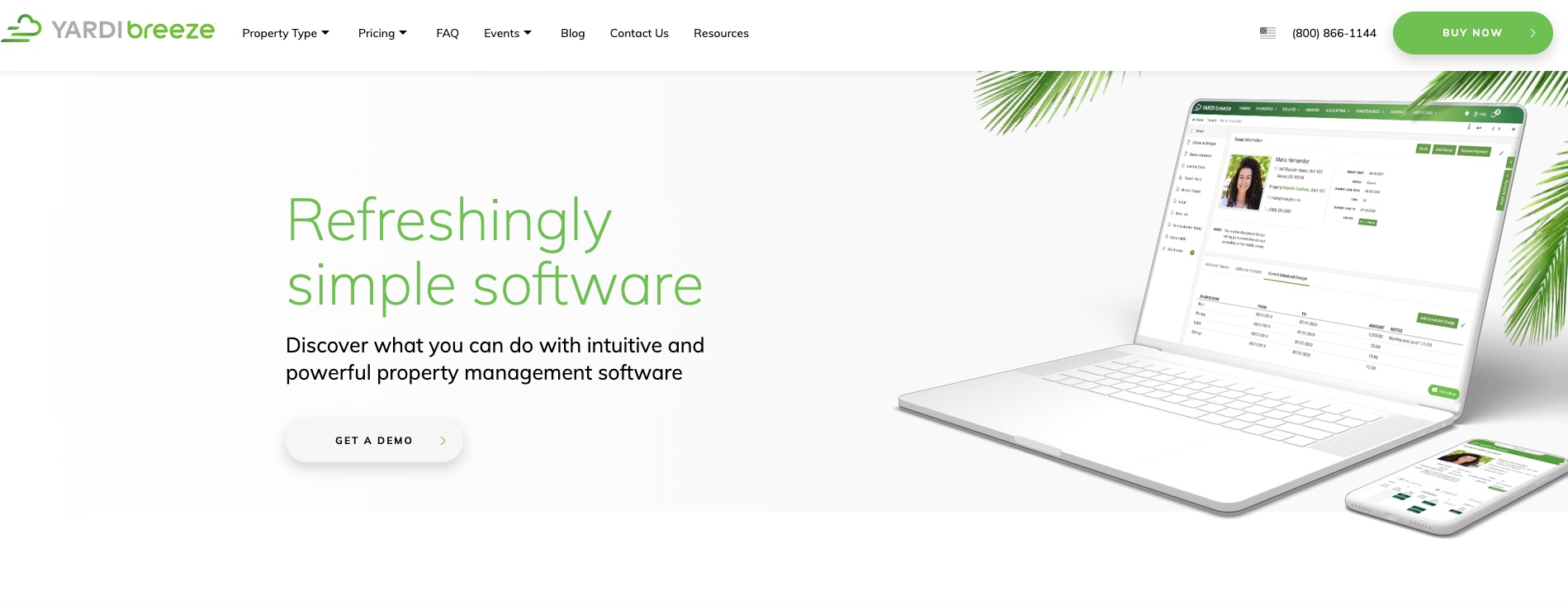
Founded in 1984, Yardi has long been one of the most established names in property management software. Yardi Breeze is its modern, cloud-based solution designed for residential portfolios, bringing accounting, leasing, maintenance, and owner and tenant portals together in one intuitive platform.
For residential users, Yardi Breeze offers two main packages. The Breeze plan starts at $1 per unit per month with a $100 monthly minimum, making it a cost-effective option for landlords who need core management tools. The Breeze Premier plan starts at $2 per unit per month with a $400 minimum, and adds advanced features such as utility billing, automated income verification, and expanded reporting capabilities.
With its straightforward pricing and trusted reputation, Yardi Breeze is a strong choice for landlords and property managers looking for dependable, easy-to-use software backed by decades of industry experience.
Stessa
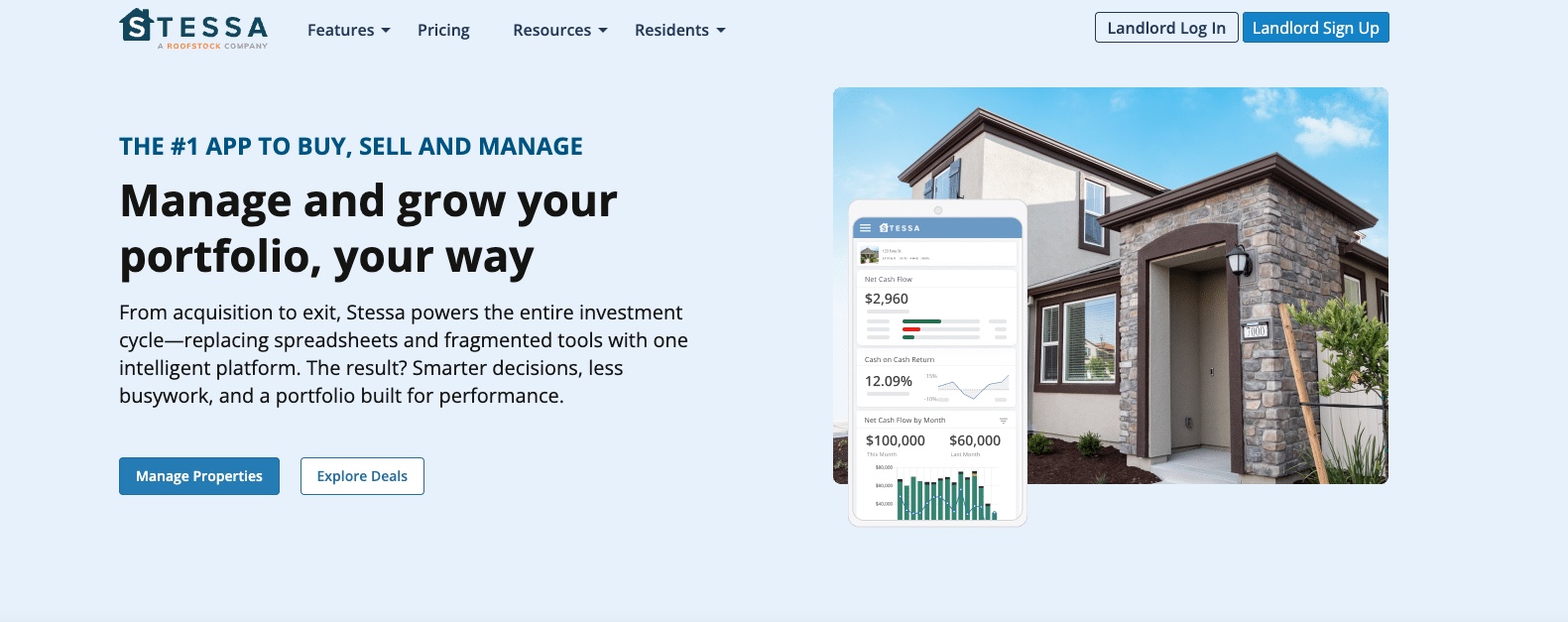
Stessa offers a powerful free plan that allows landlords and small owners to start managing their portfolios without upfront cost, ideal for tracking income and expenses, handling online rent collection, and generating basic reports.
When you’re ready for more advanced capabilities, Stessa’s paid tiers unlock features like comprehensive financial dashboards, deep transaction tracking, accelerated rent payouts and enhanced tax-ready reporting.
Because the free tier supports unlimited properties and integrates key financial functions, Stessa is a compelling option for landlords looking to streamline their operations and access investment-grade analytics without shifting away from their core tools.
Best Property Management Software for Small Landlords
For small-to-midsize landlords who need more than just the basics, or want to move to a pay-as-you-grow model, it’s worth exploring software built for cost-efficiency. While TurboTenant is a great starting point for zero cost, these next three companies offer highly competitive pricing and comprehensive features tailored to smaller portfolios.
Landlord Studio
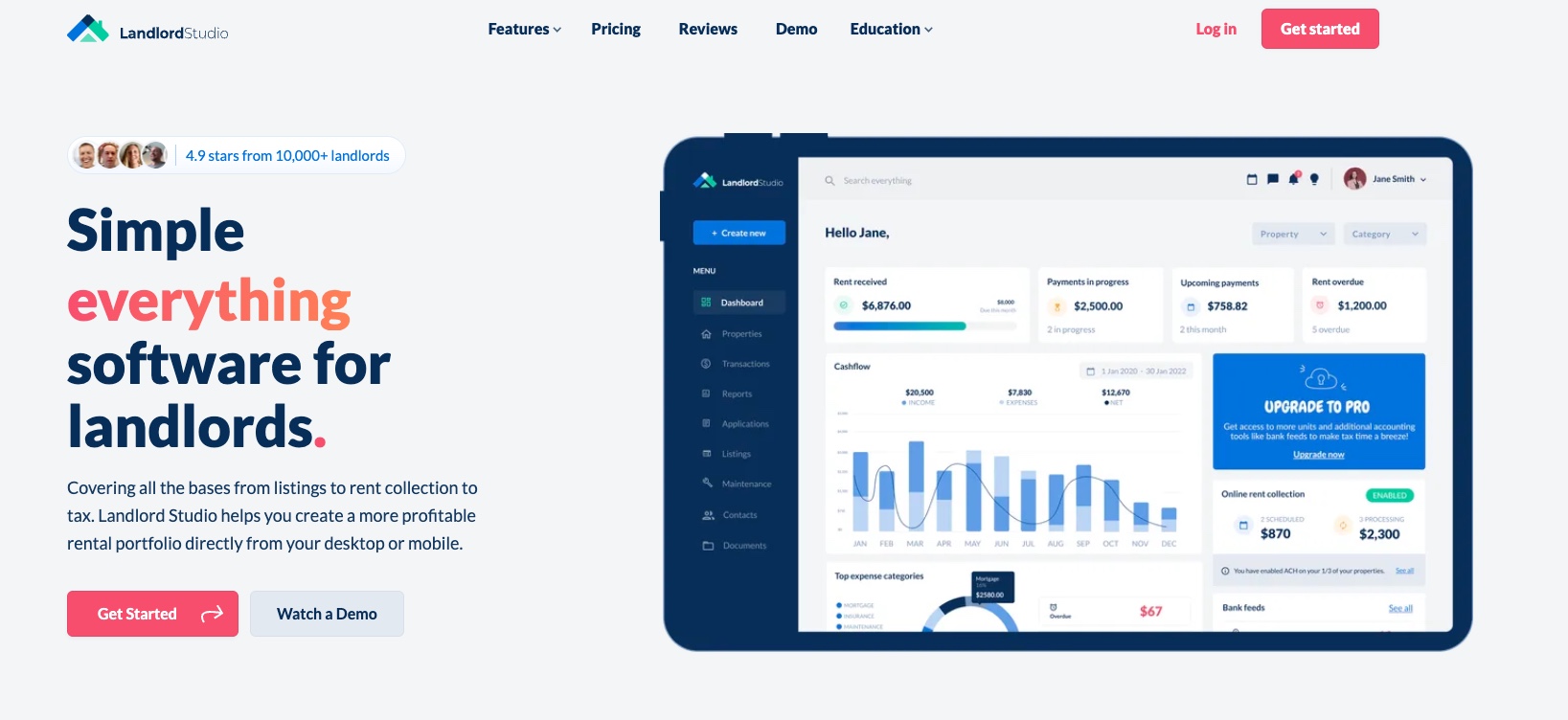
Landlord studio’s free “GO” plan covers up to 3 units and includes manual income and expense tracking, online rent collection (with a small transaction fee), maintenance tracking, basic reports, and even a GPS mileage tracker—solid essentials for landlords getting started.
When you’re ready for more automation, the PRO plan starts at $12 per month (billed annually) and includes up to three units, with each additional unit costing just $1 per month. That means even at 100 units, you’re looking at roughly $109 per month, which is still highly affordable compared to most competitors.
PRO also adds features like automated bank feeds, recurring expenses, multi-user access (up to three users), full data export, and enhanced reporting. For landlords who want more collaboration and storage capacity, the PRO Plus plan (about $28 per month) increases support to ten users and unlocks unlimited document storage.
Overall, Landlord Studio offers one of the most flexible and cost-effective pricing models around—making it an ideal upgrade for small landlords who are ready to scale without breaking their budget.
SimplifyEm
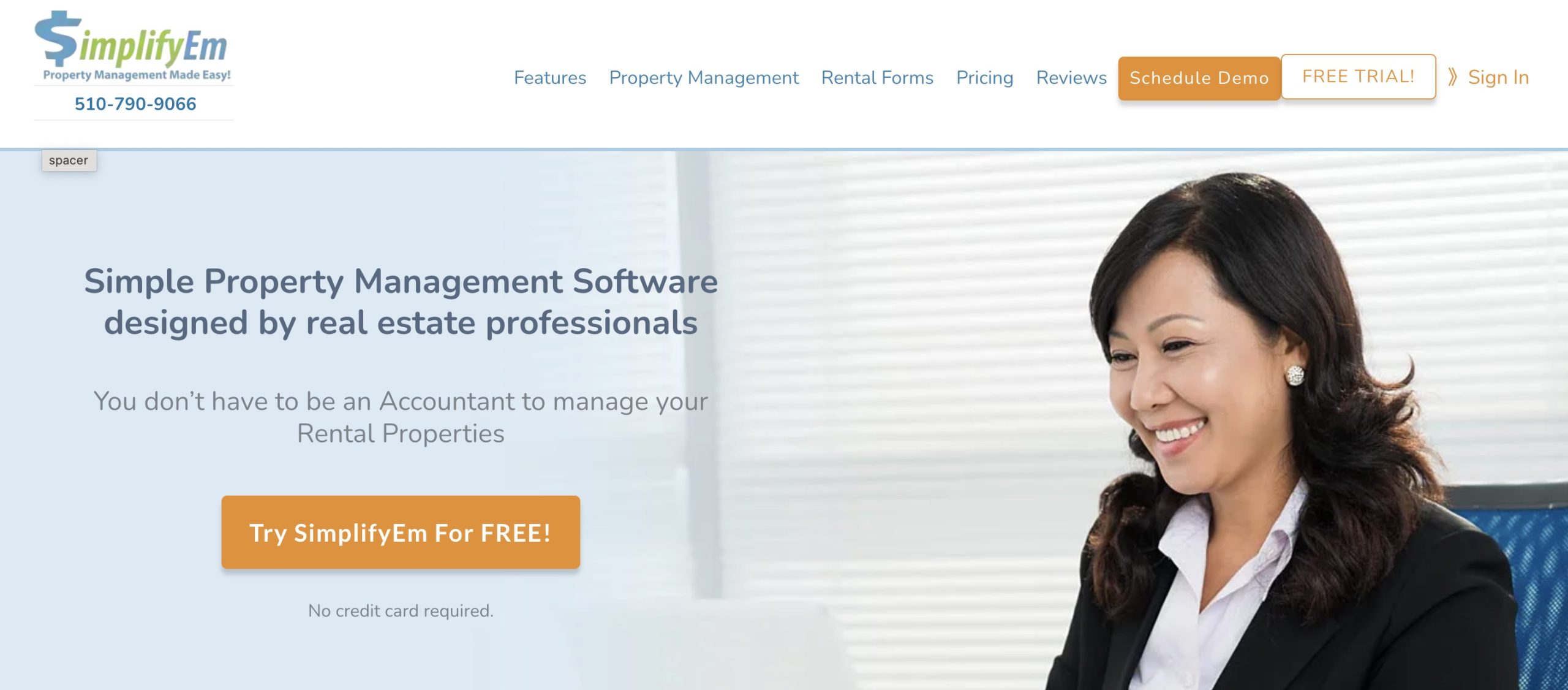
If you’re managing a handful of units but want a serious upgrade from the most basic tools, SimplifyEm is a solid option. Unlike many pay-as-you-grow models, it uses flat-tier pricing (which can simplify budgeting).
Their lowest tier starts at about US $25/month (for up to ~10 units) and includes core features like income & expense tracking, tenant/lease management, vendor management, maintenance tracking and detailed reports.
One public page lists a starting price of US $40/month for 10 units.
So you’ll want to check directly for your portfolio size, but you’re looking at roughly $25-$40/month for that entry level.
Across all plans, SimplifyEm supports features like online rent payments, bank reconciliation, statements, tenant portals, and full reporting—making it more than just the “free starter” versions of some platforms.
Because of the flat pricing (versus a strict “per unit extra” model), it’s particularly appealing if you expect some growth but want predictable cost escalation.
If you’ve moved past the free tier and want reliability + full features tailored to small-to-mid portfolios, SimplifyEm gives you strong value.
Innago
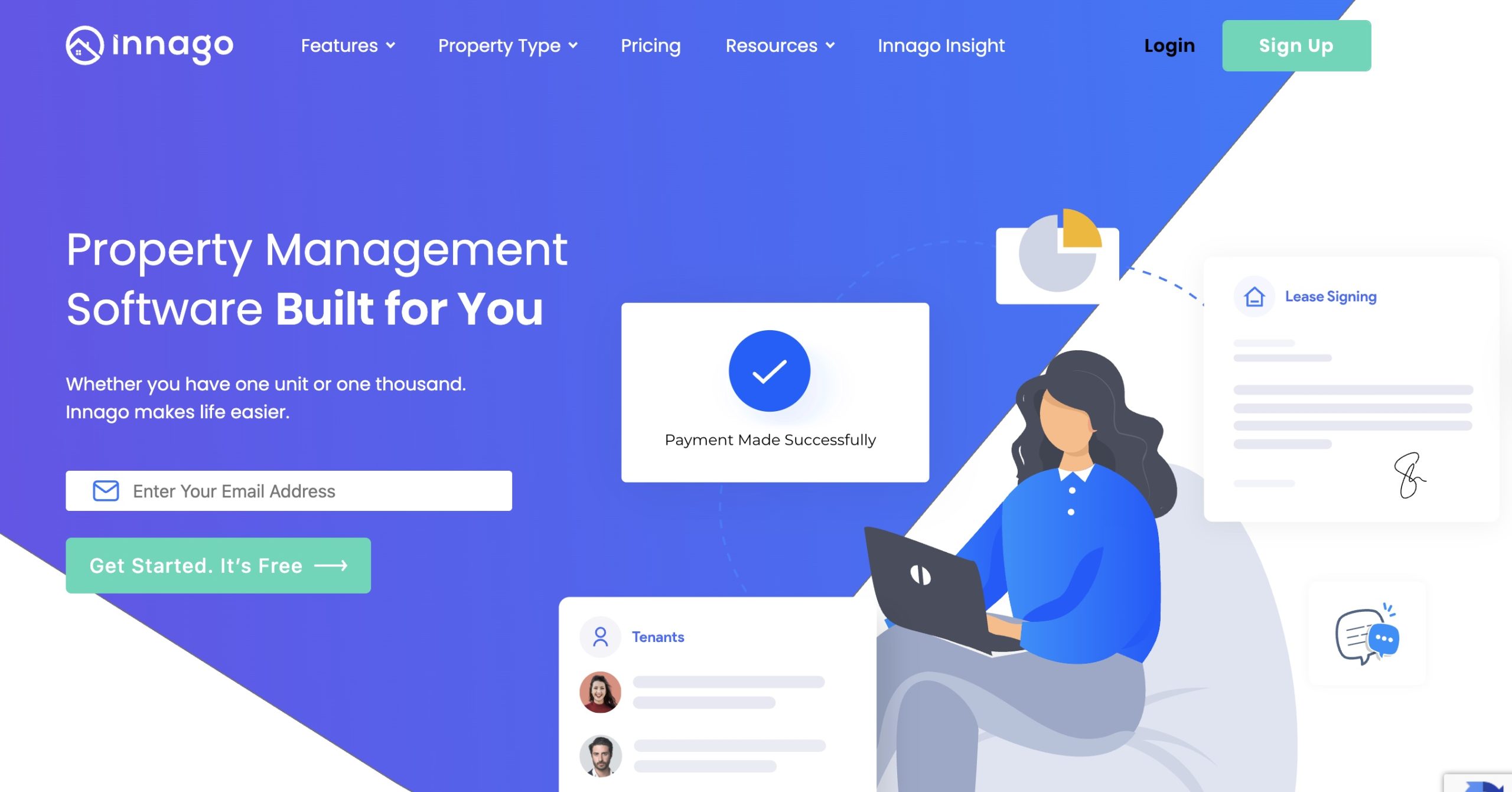
The final property management software on our list is Innago—and it’s definitely not one to overlook if you’re managing a smaller portfolio.
Innago stands out as one of the few platforms that’s completely free for landlords, with no setup or monthly subscription fees. Even at no cost, it includes online rent collection, tenant screening, digital lease signing and document storage, income and expense tracking, work order management, tenant communication tools, and automated late fees and invoicing—plus direct customer support, which is rare for free software.
Innago’s paid services are optional and usage-based, rather than tiered subscriptions. For example, tenant screening reports are charged per applicant, and tenant payment processing carries small transaction fees (ACH or credit card). This makes Innago a great fit for landlords who want robust functionality without committing to a monthly plan.
That said, if you need advanced accounting, integrations, or large-scale portfolio management, you may find the simplicity of Innago limiting compared to enterprise systems like Buildium or AppFolio. But for smaller landlords, it’s one of the most feature-rich free tools available.
Before You Buy: Key Things to Consider
Before making a choice, it’s worth stepping back to evaluate what actually matters for your business. The “best” software depends on your portfolio size, operations, and goals, but most landlords and property managers should consider these key factors before committing.
1. Scalability and Portfolio Fit
The right software should grow with you. Whether you manage five units or five hundred, look for platforms that offer tiered pricing and add-on modules as your portfolio expands. Some tools like AppFolio or Buildium, require a minimum number of units, while others, like TurboTenant and Innago, are ideal for smaller or growing portfolios.
2. Integration and Compatibility
Your property management system shouldn’t exist in a silo. Look for open APIs or integrations with accounting tools (like QuickBooks), communication platforms, and maintenance systems. And while not every solution connects directly, complementary tools such as Bright Investor can help property managers analyze markets and identify new growth opportunities alongside their operational software.
For example, many property managers connect their core software to platforms like Lula, which streamlines maintenance scheduling, vendor management, and service coordination across systems such as AppFolio and TurboTenant.
3. Automation and Time Savings
Automation is where property management software really earns its keep. Features like automatic rent reminders, late fee notices, lease renewal alerts, and maintenance tracking can free up hours each week, especially valuable for landlords managing multiple properties.
4. Reporting and Compliance Tools
Robust reporting helps you stay on top of cash flow, taxes, and performance metrics. Customizable reports let you track what matters most –income and expense summaries, maintenance trends, or occupancy rates–without sifting through irrelevant data.
5. Ease of Use and Support
Even the best software isn’t helpful if it’s frustrating to use. Look for intuitive dashboards, clear navigation, and mobile access that makes it easy to manage properties on the go. Reliable onboarding and responsive customer support are also key; these ensure you can get set up quickly and resolve issues without disrupting daily operations.
Many platforms offer free demos or trial periods, so take advantage of those to see how the interface feels and whether it fits your workflow. Smooth communication between your team, vendors, and property owners is often what separates good software from great software.
6. Pricing and Minimum Requirements
Consider your total cost of ownership, including monthly fees, minimum unit thresholds, and any add-on costs for features like e-signatures or integrations. Free or low-cost platforms can be great starting points, but as your needs evolve, ensure that the next pricing tier delivers meaningful ROI.
Which Property management software is best for your business?
There’s no single “best” choice, only the right property management software for your portfolio and workflow. The ideal fit depends on how many units you manage, the type of properties you own, and whether you want an all-in-one platform.
Many tools serve specific niches: Guesty leans into short-term/vacation rentals (even glamping), Propertyware focuses on single-family portfolios, and SummerOS targets short-term operators with performance and ops tooling.
Once you’ve got a shortlist, test before you commit. Try a free plan or demo to see if it’s easy to collect rent online, screen tenants, and manage leases for multiple rental properties. You’ll quickly learn whether the platform’s financial reports, tenant management, and mobile apps fit your needs, or if something essential to your business operations falls short.
Take your time and compare. There isn’t a one-size-fits-all app for landlords—just the right tool for where your business is today (and where it’s headed).
Anything found written in this article was written solely for informational purposes. We advise that you receive professional advice if you plan to move forward with any of the information found. You agree that neither Lula or the author are liable for any damages that arise from the use of the information found within this article

Nice list! Good property management software can really save time and make things easier for landlords.
Which one do you think is best for small landlords?